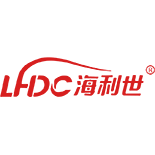car throttle cable
Understanding the Throttle Cable A Key Component in Automotive Performance
The throttle cable is a crucial component of a vehicle's acceleration system, playing a vital role in the interface between the driver and the car's engine. This simple yet effective mechanism controls the airflow into the engine, thereby regulating its power output and overall performance. Understanding the design, function, and maintenance of the throttle cable can enhance a driver’s knowledge of their vehicle and contribute to better performance and longevity.
What is a Throttle Cable?
The throttle cable is essentially a flexible wire that connects the accelerator pedal to the throttle body in the engine. When the driver presses down on the accelerator, the cable pulls the throttle open, allowing more air to enter the engine. This increase in air intake leads to more fuel being injected, generating the necessary power to accelerate the vehicle.
In modern vehicles, throttle control has evolved significantly with the introduction of electronic throttle control (ETC), which replaces the traditional mechanical throttle cable with electronic signals. However, many older and some newer models still use the mechanical throttle cable system, making it essential for drivers to understand how it works and how to maintain it.
How It Works
The operation of the throttle cable is straightforward. As the driver pushes the accelerator pedal, the pedal moves a lever which in turn pulls on the throttle cable. This action opens the throttle plate, allowing air into the engine. The amount of air and the resultant power output is proportional to how far the driver presses the accelerator. This direct connection provides immediate feedback and control, which many driving enthusiasts prefer.
Signs of Throttle Cable Issues
car throttle cable

Like any mechanical component, the throttle cable can wear out or become damaged over time. Common issues include
1. Sticky or Stiff Pedal If the accelerator feels stiff or doesn’t return smoothly to its original position, it may indicate cable wear or damage. 2. Unresponsive Acceleration A malfunctioning throttle cable can lead to unresponsive acceleration, where pressing the pedal does not result in the expected increase in speed. 3. Inconsistent Power Delivery A frayed or partially obstructed cable can cause the throttle to open inconsistently, leading to jerky acceleration.
Maintenance and Replacement
Maintaining the throttle cable is relatively easy and can prevent many issues associated with throttle responsiveness. Regular inspections and lubrication can help keep the cable functioning smoothly. If signs of wear or damage are observed, it is advisable to replace the throttle cable promptly to avoid driving complications.
The replacement process typically involves
1. Disconnecting the battery to prevent electrical shorts or unintended acceleration. 2. Removing any covers that may obstruct access to the throttle assembly. 3. Detaching the old throttle cable from both the accelerator pedal and the throttle body. 4. Installing the new cable by reversing the removal steps and ensuring proper adjustments are made to eliminate slack.
Conclusion
The throttle cable, though often overlooked, is integral to a car's overall driving experience. Understanding its mechanism, recognizing potential issues, and maintaining it properly can significantly enhance a vehicle's performance and reliability. Whether you drive an older car with a traditional throttle cable system or a more modern vehicle with electronic controls, being aware of this component's role is essential for any responsible car owner. Regular maintenance not only ensures smooth acceleration but also contributes to the safety and enjoyment of driving.
-
Workings of Clutch Pipe and Hose SystemsNewsJun.04,2025
-
The Inner Workings of Hand Brake Cable SystemsNewsJun.04,2025
-
The Secrets of Throttle and Accelerator CablesNewsJun.04,2025
-
The Hidden Lifeline of Your Transmission Gear Shift CablesNewsJun.04,2025
-
Demystifying Gear Cables and Shift LinkagesNewsJun.04,2025
-
Decoding Clutch Line Systems A Comprehensive GuideNewsJun.04,2025
